Enhanced strength and ductility of high-entropy alloy via dislocation-mediated heterogeneous martensitic transformation
Abstract
The pursuit of unparalleled mechanical properties has driven the exploration of heterostructured materials in recent years. Traditional strategies that rely on tuning internal plastic strain to create heterogeneous distributions of martensite have failed to overcome the strength-ductility trade-off in materials, despite the desirable extensive hardening effect of martensitic transformation. Here, we report a paradigm-shifting approach utilizing dislocation-mediated heterogeneous martensitic transformation to resolve this dilemma. Realized in a partially recrystallized metastable face-centered cubic (FCC) high-entropy alloy (HEA), the phase transformation from FCC to a hexagonal close-packed (HCP) structure occurs exclusively in the non-recrystallized zones during initial tensile loading, facilitated by abundant pre-existing dislocations serving as sources for partial dislocations. In contrast, deformation in the adjacent recrystallized zones, which are devoid of dislocations, proceeds through dislocation slip. The resulting heterogeneous deformation persists with increasing strain, underpinned by the emergence of unique dual FCC-HCP nanograins at localized HCP lamellar intersections in the non-recrystallized zones. Such sustained heterogeneous deformation enables the full exploitation of remarkable hetero-deformation-induced strengthening and strain hardening, leading to a superior strength-ductility combination in the current HEA. Our findings establish a new pathway for engineering high-performance heterostructured materials.
Keywords
INTRODUCTION
Heterostructured materials, defined by a disparity in microstructural features that lead to strength heterogeneity across their various zones, have garnered widespread attention due to their promising mechanical properties[1,2]. The foundation of this enhanced mechanical performance lies in hetero-deformation induced (HDI) strengthening and strain hardening, phenomena that emerge from the dynamic interplay between the back stress in softer zones and forward stress in harder ones[3,4]. Exploiting this advantageous HDI hardening effect, a plethora of strategies have been implemented in the engineering of heterostructured materials[5]. Notable among these are the creation of heterogeneous lamellar structures comprising ultrafine and coarse grains[6], the establishment of a gradient in grain size[7-9], twin density[10,11], or dislocation density structure[12], and the development of multi-modal configurations that integrate bimodal grain distributions with nanoprecipitates[13-15]. Each of these strategies plays a crucial role in attaining a desirable combination of strength and ductility, pushing the boundaries of material performance.
Deformation-induced martensitic phase transformation stands out as a highly sought-after attribute, primarily due to its role in facilitating progressively intense strain hardening, a cornerstone of the well-known transformation-induced plasticity (TRIP) effect[16,17]. In the realm of heterogeneous material design, the twinning-induced plasticity (TWIP) effect has been widely implemented[10,11], whereas the TRIP effect remains a potential strategy with untapped potential for development. The propensity for martensite phase transformation is largely governed by stacking fault energy (SFE), a parameter intricately linked to alloy composition[18-20]. In this regard, for given metastable alloys, achieving heterogeneous distributions of martensite typically involves tailoring internal plastic strain, as demonstrated through methods like torsion-based treatments[21] or surface nano-crystallization techniques[22]. However, these gradient distributions of martensite, while they significantly enhance strength, often result in a marked reduction in ductility, thereby failing to surmount the compromise between strength and ductility.
Here, we report a pioneering approach utilizing dislocation-mediated martensite phase transformation for the creation of heterostructured materials. We showcase this breakthrough in a heterostructured face-centered cubic (FCC) Fe40Co20Cr20Mn10Ni10 high-entropy alloy (HEA), which consists of recrystallized zones with a fine grain size of ~2 μm and non-recrystallized zones with a high density of dislocations. Upon loading, the presence of dislocations and the associated low-angle grain boundaries (LAGBs) within the non-recrystallized zones serves as sources of partial dislocations, initiating martensitic phase transformation. Notably, this hexagonal close-packed (HCP) martensite formation is conspicuously absent in the neighboring recrystallized zones. Such localized transformation underpins the sustained heterogeneous deformation across different zones, effectively leveraging the HDI hardening to achieve superb mechanical properties compared to other FCC HEAs. Our findings thus mark a significant advance toward realizing an enhanced synergy of strength and ductility in structural materials.
MATERIALS AND METHODS
Bulk non-equiatomic Fe40Co20Cr20Mn10Ni10 (atomic percent, at.%) high-entropy alloys (HEAs) were synthesized via a vacuum induction melting technique with high-purity raw metals. The as-cast materials were first homogenized at 1,000 °C for 2 h and, subsequently, cold-rolled to a thickness reduction of 85%, followed by annealing at 675 °C for 60 min under an argon atmosphere. All the heat treatment processes were followed by water quenching.
The FEI Helios Nanolab G3 UC, Zeiss sigma 500 and Zeiss Merlin scanning electron microscope (SEM) were employed to perform energy-dispersive X-ray spectroscopy (EDS), electron backscatter diffraction (EBSD), and electron channeling contrast imaging (ECCI) analysis with a 25 kV acceleration voltage, respectively. The deformation substructures were further examined via Titan G2 Cs-corrected transmission electron microscopy (TEM) operated at 300 kV. Specimens for SEM characterization were produced by mechanical grounding, followed by fine polishing using a silica oxide suspension. For TEM observations, thin foil cut from deformed samples was mechanically grounded to 50 μm, and twin-jet electropolished by TenuPol-5 in an electrolyte consisting of 10% perchloric acid and 90% ethanol with a voltage of 35 V at
Dog-bone-shaped tensile specimens with a gauge length of 8 mm, width of 2 mm, and thickness of 1 mm were fabricated by electrical discharge machining. After the mechanical polishing, three specimens were tensile tested for each condition in a Zwick/Roell Z5.0TN universal testing machine with a strain rate of
Molecular dynamics (MD) simulations were carried out using LAMMPS code[23] and employing the second nearest-neighbor modified embedded-atom method (2NN MEAM) potential. We constructed a layered model of non-equiatomic Fe40Co20Cr20Mn10Ni10 (in at.%) HEAs. The dimension of the middle layer is about 38 × 50 × 1 nm3 (Lx × Ly × Lz), and the top and bottom layers are 38 × 25 × 1 nm3 (Lx × Ly × Lz). The x- and y-axes align closely with
RESULTS AND DISCUSSION
Initial microstructure
Figure 1 shows the initial microstructures with heterogeneous structure (HS) in the HEA sample after incomplete recrystallization annealing at 675 °C for 60 min (hereafter referred to as HS-HEA). The EBSD inverse pole figure (IPF) [Figure 1A] and boundary map [Figure 1B] delineate the partially recrystallized HEA containing ~26% area fraction of non-recrystallized zones and ~74% of recrystallized zones, with average grain sizes of ~25 and ~2 μm, respectively. Only high-angle grain boundaries (HAGBs) are detected in the recrystallized zones [Figure 1B], while plenty of LAGBs and dislocations are seen in the non-recrystallized zones, as demonstrated by the EBSD and ECCI [Figure 1C and D]. Cold rolling introduced these dislocations, persisting post-annealing since the temperature was not sufficiently high. Moreover, these dislocations entangle with each other [Figure 1E], which contributes to the formation of LAGBs, leading to pronounced misorientation in non-recrystallized zones [Figure 1C]. The zoom-in high-resolution (HR) TEM image in Figure 1F indicates the existence of numerous Shockley partial dislocations of the
Figure 1. Initial microstructure of the HS-HEA. (A) Inverse pole figure map; (B) Boundary map overlayed with image quality map. High-angle grain boundaries, low-angle grain boundaries, and annealing twin boundaries are highlighted; (C) Kernel average misorientation. These EBSD maps reveal the FCC-structured HS-HEA consisting of both recrystallized and non-recrystallized zones; (D) ECCI image showing the microstructures of the marked zones in (A); (E) Bright-field transmission electron image revealing the non-recrystallized zones with high densities of dislocations; (F) Zoom-in TEM image and the fast Fourier transform filtered high-resolution TEM image of partial dislocation obtained from the areas marked in (E). S and F represent the starting and ending points of Burgers circuit, respectively. b, Burgers vector; (G) SEM-EDS maps of five principal elements, i.e., Fe, Co, Cr, Ni, and Mn, for the zone in (D). All elements are distributed uniformly between recrystallized and non-recrystallized zones. HEA: High-entropy alloy; HS: heterogeneous structure; EBSD: electron backscatter diffraction; FCC: face-centered cubic; ECCI: electron channeling contrast imaging; TEM: transmission electron microscopy; SEM: scanning electron microscope; EDS: energy-dispersive X-ray spectroscopy.
In addition, APT measures were further performed to quantify the elemental chemical composition of the recrystallized and non-recrystallized regions at the near-atomic scale. Figure 2 presents the reconstructed 3D atom maps of all elements (Cr, Mn, Fe, Ni and Co), suggesting that the elemental distributions of both regions are completely random without obvious chemical heterogeneity. In order to further identify the potential differences, the actual contents of each element are listed respectively. The experimental data precisely confirms a uniform distribution of all elements, which are close to the nominal compositions, highlighting identical SFE throughout the HEA. Consequently, the subsequent variations of plastic deformation pathways between the recrystallized and non-recrystallized regions are independent of the composition.
Intriguing mechanical performance
Figure 3 presents mechanical testing and analysis of HEAs with different processing conditions. The representative engineering tensile stress-strain curves at room temperature are shown in Figure 3A. Compared to the as-cast HEA in its homogenized state (HM-HEA), the HS-HEA not only demonstrates a substantial increase in yield strength from 165 to 684 MPa, but also produces an impressive rise in tensile elongation from 45% to 49%. This suggests a breakthrough in the notorious strength-ductility trade-off often observed in structural materials[24]. Even when compared with the previously reported exceptional single-phase HEAs, e.g., FeCoCrNiPd HEA[25] and gradient FeCoCrNiMn HEA[26], our HS-HEA showcases better overall mechanical properties. The excellent strength of the HS-HEA stems from the bimodal configuration, which includes both recrystallized zones with fine grains, and non-recrystallized zones filled with high densities of LAGBs and dislocations. The small grain size can enhance the strength due to the Hall-Petch effect[27], while the LAGBs and dislocations provide strong strengthening effects[27], thereby contributing to high yield strength. The quantitative analysis of each strengthening mechanism is provided in the Supplementary Materials.
Figure 3. Mechanical performance of HEAs. (A) Engineering stress-strain curves of the HS-HEA and HM-HEA. The mechanical performance of FeCoNiCrPd[25] HEA and gradient FeCoCrNiMn[26] HEA is shown for comparison; (B) Strain hardening rate curves as a function of the true strain for both HS-HEA and HM-HEA. The inserted SEM micrograph shows the ruptured surface of the HS-HEA sample; (C) LUR stress-strain curves of HM-HEA and HS-HEA; (D) The evolution of calculated HDI stress versus true strain. HEAs: High-entropy alloys; HEA: high-entropy alloy; HS: heterogeneous structure; HM: homogenized; SEM: scanning electron microscope; LUR: loading-unloading-reloading; HDI: hetero-deformation induced.
Notably, in comparison to the HM-HEA, the HS-HEA showcases higher strain hardening rates nearly across the entire deformation regime [Figure 3B]. The high strain hardening further stabilizes the plastic deformation and, thus, dramatically benefits the ductility. The ruptured surface of HS-HEA (inset in Figure 3B) reveals a typical dimpled morphology associated with ductile fracture. Bimodal dimple configuration manifests the heterogeneous stress distribution across different grain sizes during the fracture process. To probe the origin of excellent strain hardening, the LUR tests were conducted [Figure 3C]. As shown by the typical LUR cycle curves, the HS-HEA exhibits larger unloading-reloading hysteresis loops than HM-HEA, signifying the appearance of a stronger Bauschinger effect. It is generally believed that the Bauschinger effect correlates with the HDI stress induced by heterogeneous plastic deformation. Accordingly, the HDI stress can be computed by unloading yield stress and reloading yield stress by analyzing the hysteresis loops[28]. Figure 3D plots the HDI stress versus true strain for both HS-HEA and HM-HEA. With the tensile deformation proceeding, the HDI stress of HS-HEA increases even more dramatically throughout all strains compared to HM-HEA. This strong HDI stress would trigger an extra HDI hardening mechanism during plastic deformation, which is responsible for enhanced strength without sacrificing ductility.
Microstructure evolution during tensile deformation
To further reveal the reasons for the remarkable HDI strengthening response of the HS-HEA, microstructure evolution at various interrupted strains was systematically examined. Figure 4 shows the deformed substructures of HS-HEA after deforming to 10% strain. HCP lamellae emerged prominently within the non-recrystallized FCC zones, as depicted in the IPF map [Figure 4A], phase map [Figure 4B], and the corresponding electron channeling contrast (ECC) image [Figure 4C]. These parallel HCP lamellae [Figure 4E], attributable to deformation-induced martensitic transformation, stopped at the boundaries of recrystallized areas. The HR-TEM image in Figure 4F further unravels the (0001)HCP//{111}FCC and
Figure 4. Heterogeneous martensite phase transformation in the HS-HEA at 10% strain. (A) IPF map; (B) Phase map overlayed with IQ map; (C) ECC image; (D and E) Zoom-in ECC images of the marked zone in (C); (F) High-resolution TEM image showing the atomic structure of FCC and HCP phases. EBSD maps and the corresponding ECC image indicate the martensite phase transformation from FCC to HCP occurs in the non-recrystallized zone, forming the lamellar plates, whereas dislocation slip dominates in the recrystallized zone. This suggests heterogeneous deformation behavior in our HS-HEA. The deformation-induced HCP phase obeys the S-N orientation relationship with the FCC matrix. HS: Heterogeneous structure; HEA: high-entropy alloy; IPF: inverse pole figure; IQ: image quality; ECC: electron channeling contrast; TEM: transmission electron microscopy; FCC: face-centered cubic; HCP: hexagonal close-packed; EBSD: electron backscatter diffraction.
Upon reaching a medium strain level of 30%, the deformation within recrystallized zones predominantly arises from dislocation slip, while marked HCP lamellae form in the non-recrystallized counterparts, as shown in Figure 5A and B. Thus, the attractive heterogeneous deformation between non-recrystallized and recrystallized zones sustains with increasing strain. A surge in HCP lamellae results in their interaction with one another (see Figure 5C), which was not observed in the fully recrystallized HEA even at high strains[29]. This distinct behavior stems from phase transformation being constrained within localized non-recrystallized zones. The intersecting HCP variants exhibited an orientation relationship of
Figure 5. Sustained heterogeneous deformation substructures in the HS-HEA at 30% strain. (A) EBSD phase map overlayed IQ maps in the recrystallized zones; (B) ECC image showing the heterogeneous deformation behavior between the recrystallized and non-recrystallized zones; (C) The BF-TEM image indicating HCP interactions in the non-recrystallized zone. ε(1-4) represent HCP variants with different orientations, while γ represents the FCC matrix; (D) The HR-TEM image of the HCP intersections area; (E and F) The fast Fourier transform filtered HR-TEM image of the boundary structure marked in (D). The orientation of ε phases at junction areas is marked, which indicates
When the strain goes up to 49%, we detect intensive HCP lamellae intersections based on ECCI observations in the non-recrystallized zones, while very fine HCP martensite plates are seen in the recrystallized zones, as depicted in Figure 6A-C. The further zoom-in TEM observations reveal abundant nanograins at intersections of the HCP lamellae that comprise both FCC and HCP phases. As shown by the inserted fast Fourier transform image (inset in Figure 6D), diffraction rings with various crystal orientations signify the existence of nanograins. The further HRTEM images reveal, beyond the aforementioned twinning relationship [Figure 6E and F], the existence of an HCP variant with a
Figure 6. Deformation substructures of the HS-HEA at 49% strain. ECC images of HS-HEA showing (A) martensite emission from LAGBs, (B) ε-ε intersection in the non-recrystallized and (C) martensite in the recrystallized zone; (D) BF-TEM showing the dual-nanograins of the FCC and HCP phases at the junction area of the HCP lamellae. The selected area electron diffraction pattern confirms the formation of dual-nanograins. Stacking faults are detected inside nanograins; (E and F) Zoom-in HR-TEM images showing ε variants of the marked zone in (D); (G-J) The FFT-filtered HR-TEM images of ε and γ variants in (D). ε(1-5) and γ(1-3) represent HCP and FCC variants with different orientations, respectively, of which the specific orientation among them is marked in images. HS: Heterogeneous structure; HEA: high-entropy alloy; ECC: electron channeling contrast; LAGBs: low-angle grain boundaries; BF: bright field; FCC: face-centered cubic; HCP: hexagonal close-packed; HR: high-resolution; FFT: fast Fourier transform.
Besides the twinning or S-N orientation relationship, an FCC nanograin with another orientation relationship is exhibited, as shown in Figure 7A. The FCC nanograin shows (0001)HCP//{001}FCC and
Figure 7. (A) HR-TEM image of HS-HEA with 49% strain showing new γ variant at interaction areas; (B-D) The FFT-filtered HR-TEM image marked in (A) showing orientation relationships between γ and ε variants. HR: High-resolution; TEM: transmission electron microscopy; HS: heterogeneous structure; HEA: high-entropy alloy; FFT: fast Fourier transform.
The summary of the orientation relationship of the FCC and HCP phases
| Relationships | Formation |
| ε-ε | |
| Two ε transformed from different planes of {111} group in FCC crystal. | |
| Grain rotation | |
| γ-γ | |
| FCC twin relationships via reverse transformation | |
| Reverse transformation from ε | |
| Reverse phase transformation + grain rotation | |
Dislocation-mediated heterogeneous martensitic transformation
In this work, we demonstrate the dislocation-mediated heterogeneous martensitic transformation in a partially recrystallized high-entropy alloy. This heterogeneous martensitic phase transformation is induced by pre-existing partial dislocations in non-recrystallized zones. The difference in deformation behavior between recrystallized and non-recrystallized zones persists until the later stages of strain. The formation mechanisms of this heterogeneous martensitic transformation at various strain levels are discussed in detail below.
At the early deformation stage, martensitic transformation occurs only in localized non-recrystallized zones upon tensile loading, while adjacent recrystallized zones deform through dislocation slip, resulting in the presence of heterogeneous martensite. To further uncover the underlying mechanism of the heterogeneous phase transformation in the non-recrystallized zones, we performed molecular dynamic (MD) simulations by applying a tension load to a layered structure featuring two LAGBs with a misorientation angle of 10° [Figure 8]. The relaxed LAGBs are randomly decorated with dislocations [Figure 8A-C]. Upon loading, Shockley partial dislocations emit from the two LAGBs and glide along the
Figure 8. MD simulations revealing dislocation-mediated martensite phase transformation. (A) Schematic of the simulation model with two LAGBs (dashed lines). “T” symbols indicate dislocations at LAGBs; (B) Random distribution of various elements in the model and (C) atomic structure of relaxed LAGB. The misorientation between LAGB is about 10°; (D-H) The FCC-HCP phase transformation with increasing strain: (D) 0%, (E) 4%, (F) 6%, (G) 8%, and (H) 10%; (I) The magnified image of (H) showing the orientation relationship between the HCP and FCC phases. The atoms are colored according to common neighbor analysis. The arrows indicate the glide direction of the partial dislocations. MD: Molecular dynamic; LAGBs: low-angle grain boundaries; LAGB: low-angle grain boundary; FCC: face-centered cubic; HCP: hexagonal close-packed.
As deformation progresses to medium strain levels, the heterogeneity of martensitic phase transformation endures. During this stage, dislocation density increases in the recrystallized zones, while multiple HCP variants are activated in the non-recrystallized zones [Figure 5]. The ε-martensite phase forms through the successive gliding of partial dislocations on alternating {111} plane[35]. When partial dislocations initiate from conjugate {111} planes within the FCC matrix, the resulting HCP variants intersect at a misorientation angle of around 70.5° [Figure 5C]. Partial dislocations within one HCP plate are generally hindered from propagating into the slip system of an intersecting HCP plate due to severe stress concentration from dislocation pile-up at intersections[36,37]. To accommodate the resulting plastic deformation, twinning is commonly an effective mechanism in hexagonal phases. Thus, intersections of two crossing HCP phases can generate ε-martensite twins to relieve local stress, governed by the orientation of crossing shear systems[38]. When the HCP variants present the orientation relationships of
Even at higher strain (~49% strain), the heterogeneous deformation behavior still persists. In the recrystallized zones, the mechanical driving force can reach the stress required for martensitic transformation due to the increased flow stress, resulting in the formation of very fine martensite phases [Figure 6C]. Meanwhile, intersections of two HCP bands in the non-recrystallized zones become increasingly complex [Figure 6D] as stress on the HCP plates rises. Partial dislocations can emit from the interfaces of multiple martensite phases. When double half-partial dislocations (
Overall, we instigate heterogeneous martensitic phase transformation by meticulously introducing LAGBs and dislocations, presenting an alternative approach to realize the TRIP effect. Both dislocations and LAGBs supply the necessary sites for the emission of partial dislocations upon straining, facilitating the formation of HCP plates. Traditionally, efforts to achieve the TRIP effect have focused on manipulating SFE, typically by altering chemical compositions or reducing loading temperatures[35,41]. In materials with reduced SFE, martensitic phase transformations readily occur[17,42,43], attributed to the decreased energy barrier for activating partial dislocations[44,45]. By contrast, we circumvent the SFE limitation and enable the martensitic phase transformation at the onset of deformation, which was deemed elusive for materials with such a level of SFE (~20 mJ/m2) previously[46]. This distinctive martensitic phase transformation effectively promotes heterogeneous deformation behavior in HS-HEA.
Sustainable hetero-deformation induced hardening
The strain hardening rates are significantly higher in the HS-HEA compared to the HM-HEA, which is essential for achieving enhanced strength-ductility synergy, as shown in Figure 3A and B. The contribution to the superior strain hardening capability of HS-HEA is its higher HDI stress relative to HM-HEA. Notably, HDI stress increases with applied tensile strain [Figure 3C and D], driven primarily by the sustained heterogeneous deformation behavior across all strain stages. This includes early-stage martensitic transformation and later-stage dual-nanograin formation at HCP lamellae intersections in the non-recrystallized zones, while dislocation motion consistently dominates in the recrystallized zones.
To investigate the origin of HDI stress further, nanoindentation was used to assess the hardness of recrystallized and non-recrystallized zones across various strain stages [Figure 9]. As shown in Figure 9A, D, and G, non-recrystallized zones exhibit higher strength than recrystallized zones in the undeformed state due to dislocation strengthening. Under applied tensile stress, the strength of both zones experiences distinct increments [Figure 9B, E and H]. The softer recrystallized zones deform preferentially compared to the harder non-recrystallized zones, resulting in steep strain gradients within the material. To accommodate deformation under complex stress/strain conditions, numerous geometrically necessary dislocations (GNDs) are generated and accumulate at the interfaces[47,48]. The pile-up of GNDs produces back stress in the soft zones and forward stress in the hard zones, collectively contributing to HDI stress and substantially enhancing strength and hardening[49,50]. With increasing tensile strain, the hardness contrast between zones persists even at higher deformation levels (up to 30% strain, Figure 9C, F, and I), driven by localized martensitic phase transformation within the non-recrystallized zones. This observation provides a compelling explanation for the continuous rise in HDI stress throughout early and medium strain stages in HS-HEA [Figure 3C and D], differing from prior studies on heterostructured materials, where HDI stress increase typically diminishes during plastic deformation[51].
Figure 9. Nanoindentation analysis of the HS-HEA at 0%, 10%, and 30% plastic strain. (A-C) The ECC micrograph revealing the microstructure evolution; (D-F) Representative EBSD IPF images overlayed IQ maps showing nano-indents in both recrystallized (RX) and non-recrystallized (NRX) zones, respectively; (G-I) The distribution of nanoindentation hardness (Hn) in RX and NRX zones.
These findings indicate that achieving substantial heterogeneous deformation behavior promotes both enhanced strength and strain hardening, attributes critical for high-performance structural materials. Such unique deformation behavior manifests in three key aspects: (1) The non-recrystallized zones with a high density of dislocations tend to soften upon loading due to dislocation recovery[51,52]. Our strategy takes advantage of dislocation to trigger martensitic phase transformation, which avoids the possible softening and, instead, offers strain hardening from this phase transformation from FCC to HCP; (2) The martensitic phase transformation is confined in the non-recrystallized zones, whereas the recrystallized zones are deformed by dislocation slip, which leads to the pile-ups of HCP lamellae at the boundaries between these two zones [Figure 4A-C]. This heterogeneous deformation behavior gives rise to high HDI stress during deformation, thereby enhancing the strain hardening [Figure 3B and D]; (3) The localized martensitic phase transformation produces a large number of dual-nanograins at HCP intersections. This prevents stress concentration in these relatively harder zones and further avoids the possible crack nucleation. Together, these mechanisms underpin the superb mechanical properties observed in our HS-HEA.
CONCLUSIONS
We demonstrate a new approach to designing heterostructured materials through dislocation-mediated martensitic phase transformation. The martensitic phase reaction from FCC to HCP is triggered by the pre-existing dislocations in non-recrystallized zones, which provides partials whose slip on alternative planes result in the phase transformation, while the resulting localized phase transformations yield dual-nanograins at HCP lamellae intersections as strain levels increase. These features collectively contribute to a significant enhancement in the heterogeneous deformation behavior. The proposed strategy effectively exploits the strong strengthening and strain hardening from the HDI hardening, delivering attractive mechanical performance in our HEA. Our findings provide a novel perspective on harnessing heterogeneous deformation behavior to develop high-performance structural materials.
DECLARATIONS
Authors’ contributions
Writing - original draft, conceptualization, investigation, data curation: Wang, F.
Writing - original draft, resources, data curation, investigation: An, X.
Writing - review & editing, conceptualization, supervision, funding acquisition: Wang, Z.
Investigation, data curation: Wu, W.; Xia, W.
Investigation, supervision: Ni, S.; Gu, J.
Investigation, data curation: Yi, J.
Validation, supervision: Yang, Y.
Writing - review & editing, conceptualization, supervision, funding acquisition: Song, M.; Zhu, Y.
Availability of data and materials
The data supporting the findings of this study are available within this Article and its Supplementary Materials. Further data are available from the corresponding authors upon reasonable request.
Financial support and sponsorship
Song, M. and Wang, Z. acknowledge support from the National Key Research and Development Program of China (2022YFE0134400). Song, M. acknowledges support from the Science and Technology Innovation Program of Hunan Province (No. 2022RC3035). Wang, Z. acknowledges the support from the Natural Science Foundation of Hunan Province (Grant No. 2022JJ30712) and Double Cs-corrected TEM in State Key Laboratory of Powder Metallurgy. Institute for Advanced Study of Central South University and Hunan Center for Electron Microscopy are sincerely appreciated for TEM technical support. Zhu, Y. acknowledges the support of the National Natural Science Foundation of China (51931003) and the Hong Kong Research Grants Council (GRF 11214121).
Conflicts of interest
Zhu, Y. is the Guest Editor of the Special Issue “Heterostructures for Superior Properties” and a Senior Editorial Board member of the journal Microstructures. Zhu, Y. was not involved in any steps of editorial processing, notably including reviewer selection, manuscript handling, or decision making. The other authors declared that there are no conflicts of interest.
Ethical approval and consent to participate
Not applicable.
Consent for publication
Not applicable.
Copyright
© The Author(s) 2025.
Supplementary Materials
REFERENCES
1. Sathiyamoorthi, P.; Kim, H. S. High-entropy alloys with heterogeneous microstructure: processing and mechanical properties. Prog. Mater. Sci. 2022, 123, 100709.
2. Ma, E.; Zhu, T. Towards strength-ductility synergy through the design of heterogeneous nanostructures in metals. Mater. Today. 2017, 20, 323-31.
3. Park, H. K.; Kim, Y.; Jung, J.; et al. Efficient design of harmonic structure using an integrated hetero-deformation induced hardening model and machine learning algorithm. Acta. Mater. 2023, 244, 118583.
4. Tang, X.; Peng, Q.; Long, J.; et al. Recent progress on plastic forming of laminated metal composites: processes, heterogeneous deformation, and interfacial regulation. J. Mater. Sci. Technol. 2025, 229, 67-91.
5. Shen, J.; Choi, Y. T.; Yang, J.; et al. Fabrication of spatially-variable heterostructured CoCrFeMnNi high entropy alloy by laser processing. Mat. Sci. Eng. A. 2024, 896, 146272.
6. Zhang, C.; Zhu, C.; Cao, P.; et al. Aged metastable high-entropy alloys with heterogeneous lamella structure for superior strength-ductility synergy. Acta. Mater. 2020, 199, 602-12.
7. Fang, T. H.; Li, W. L.; Tao, N. R.; Lu, K. Revealing extraordinary intrinsic tensile plasticity in gradient nano-grained copper. Science 2011, 331, 1587-90.
8. Pan, Q. S.; Long, J. Z.; Jing, L. J.; Tao, N. R.; Lu, L. Cyclic strain amplitude-dependent fatigue mechanism of gradient nanograined Cu. Acta. Mater. 2020, 196, 252-60.
9. Zhang, B. H.; Chen, J.; Wang, P. F.; Sun, B. T.; Cao, Y. Enhanced strength-ductility of CoCrFeMnNi high-entropy alloy with inverse gradient-grained structure prepared by laser surface heat-treatment technique. J. Mater. Sci. Technol. 2022, 111, 111-9.
10. Cheng, Z.; Zhou, H.; Lu, Q.; Gao, H.; Lu, L. Extra strengthening and work hardening in gradient nanotwinned metals. Science 2018, 362, eaau1925.
11. Wei, Y.; Li, Y.; Zhu, L.; et al. Evading the strength-ductility trade-off dilemma in steel through gradient hierarchical nanotwins. Nat. Commun. 2014, 5, 3580.
12. Pan, Q.; Zhang, L.; Feng, R.; et al. Gradient cell-structured high-entropy alloy with exceptional strength and ductility. Science 2021, 374, 984-9.
13. Shi, P.; Ren, W.; Zheng, T.; et al. Enhanced strength-ductility synergy in ultrafine-grained eutectic high-entropy alloys by inheriting microstructural lamellae. Nat. Commun. 2019, 10, 489.
14. Du, X. H.; Li, W. P.; Chang, H. T.; et al. Dual heterogeneous structures lead to ultrahigh strength and uniform ductility in a Co-Cr-Ni medium-entropy alloy. Nat. Commun. 2020, 11, 2390.
15. Cao, S.; Liu, H.; Jiang, J.; et al. Effect of heat treatment on gradient microstructure and tensile property of laser powder bed fusion fabricated 15-5 precipitation hardening stainless steel. Acta. Metall. Sin. 2024, 37, 181-95.
16. Grässel, O.; Krüger, L.; Frommeyer, G.; Meyer, L. W. High strength Fe-Mn-(Al, Si) TRIP/TWIP steels development - properties - application. Int. J. Plast. 2000, 16, 1391-409.
17. Li, Z.; Körmann, F.; Grabowski, B.; Neugebauer, J.; Raabe, D. Ab initio assisted design of quinary dual-phase high-entropy alloys with transformation-induced plasticity. Acta. Mater. 2017, 136, 262-70.
18. Liu, S. F.; Wu, Y.; Wang, H. T.; et al. Stacking fault energy of face-centered-cubic high entropy alloys. Intermetallics 2018, 93, 269-73.
19. Liu, S.; Wu, Y.; Wang, H.; et al. Transformation-reinforced high-entropy alloys with superior mechanical properties via tailoring stacking fault energy. J. Alloys. Compd. 2019, 792, 444-55.
20. Sohrabi, M. J.; Mehranpour, M. S.; Heydarinia, A.; et al. Deformation-induced martensitic transformation kinetics in TRIP-assisted steels and high-entropy alloys. Acta. Mater. 2024, 280, 120354.
21. Guo, N.; Zhang, Z.; Dong, Q.; et al. Strengthening and toughening austenitic steel by introducing gradient martensite via cyclic forward/reverse torsion. Mater. Design. 2018, 143, 150-9.
22. Cao, S. C.; Liu, J.; Zhu, L.; et al. Nature-inspired hierarchical steels. Sci. Rep. 2018, 8, 5088.
23. Plimpton, S. Fast parallel algorithms for short-range molecular dynamics. J. Comput. Phys. 1995, 117, 1-19.
24. Li, Z.; Pradeep, K. G.; Deng, Y.; Raabe, D.; Tasan, C. C. Metastable high-entropy dual-phase alloys overcome the strength-ductility trade-off. Nature 2016, 534, 227-30.
25. Ding, Q.; Zhang, Y.; Chen, X.; et al. Tuning element distribution, structure and properties by composition in high-entropy alloys. Nature 2019, 574, 223-7.
26. Hasan, M. N.; Liu, Y. F.; An, X. H.; et al. Simultaneously enhancing strength and ductility of a high-entropy alloy via gradient hierarchical microstructures. Int. J. Plast. 2019, 123, 178-95.
27. Courtney, T.H. Mechanical behavior of materials, Waveland Press, 2005.
28. Yang, M.; Yan, D.; Yuan, F.; Jiang, P.; Ma, E.; Wu, X. Dynamically reinforced heterogeneous grain structure prolongs ductility in a medium-entropy alloy with gigapascal yield strength. Proc. Natl. Acad. Sci. U. S. A. 2018, 115, 7224-9.
29. Chen, W.; An, X.; Wang, Z.; Li, Y.; Gu, J.; Song, M. Grain size dependent deformation behavior of a metastable Fe40Co20Cr20Mn10Ni10 high-entropy alloy. J. Alloys. Compd. 2021, 883, 160876.
30. Zhang, X.; Sawaguchi, T. Twinning of deformation-induced ε-martensite in Fe-30Mn-6Si shape memory alloy. Acta. Mater. 2018, 143, 237-47.
31. Martinez, M.; Hug, E. Characterization of deformation twinning in polycrystalline cobalt: a quantitative analysis. Materialia 2019, 7, 100420.
32. Wagner, C.; Laplanche, G. Effects of stacking fault energy and temperature on grain boundary strengthening, intrinsic lattice strength and deformation mechanisms in CrMnFeCoNi high-entropy alloys with different Cr/Ni ratios. Acta. Mater. 2023, 244, 118541.
33. Ponge, D.; MiUán, J.; Raabe, D. Design of lean maraging TRIP steels. In Advanced Steels 2011, Proceedings of the ICAS, Guilin, China, November 9-11, 2010; Weng, Y., Dong, H., Gan, Y., Eds.; Springer-Verlag: Berlin, Heidelberg, 2011; pp 199-208.
34. Yang, X. S.; Sun, S.; Zhang, T. Y. The mechanism of bcc α’ nucleation in single hcp ε laths in the fcc γ → hcp ε → bcc α’ martensitic phase transformation. Acta. Mater. 2015, 95, 264-73.
35. Soleimani, M.; Kalhor, A.; Mirzadeh, H. Transformation-induced plasticity (TRIP) in advanced steels: a review. Mater. Sci. Eng. A. 2020, 795, 140023.
36. Shen, S.; Xie, P.; Wu, C. Temperature dependence of mechanical properties and deformation mechanism of Fe-25Mn-3Al-3Si alloy at high strain rate. Mater. Sci. Eng. A. 2023, 872, 144912.
37. Su, J.; Wu, X.; Raabe, D.; Li, Z. Deformation-driven bidirectional transformation promotes bulk nanostructure formation in a metastable interstitial high entropy alloy. Acta. Mater. 2019, 167, 23-39.
38. Singh, D.; Singh, A.; Sawaguchi, T. Elucidating deformation pathways and interface characteristic of self-accommodated dual γ/ε phase microstructure in Fe-Mn-Si-Al alloy. Mater. Charact. 2024, 207, 113521.
39. Yang, J. H.; Wayman, C. M. Intersecting-shear mechanisms for the formation of secondary ϵ martensite variants. Acta. Metall. Mater. 1992, 40, 2025-31.
40. Yang, J. H.; Wayman, C. M. On secondary variants formed at intersections of ϵ martensite variants. Acta. Metall. Mater. 1992, 40, 2011-23.
41. Mishra, R. S.; Haridas, R. S.; Agrawal, P. High entropy alloys - tunability of deformation mechanisms through integration of compositional and microstructural domains. Mater. Sci. Eng. A. 2021, 812, 141085.
42. Liu, J.; Luo, X.; Huang, B.; et al. Nano-twinning and martensitic transformation behaviors in 316L austenitic stainless steel during large tensile deformation. Acta. Metall. Sin. 2023, 36, 758-70.
43. Huang, M.; Wang, L.; Wang, C.; et al. Optimizing crack initiation energy in austenitic steel via controlled martensitic transformation. J. Mater. Sci. Technol. 2024, 198, 231-42.
44. Bu, Y.; Li, Z.; Liu, J.; Wang, H.; Raabe, D.; Yang, W. Nonbasal slip systems enable a strong and ductile hexagonal-close-packed high-entropy phase. Phys. Rev. Lett. 2019, 122, 075502.
45. Chen, S.; Oh, H. S.; Gludovatz, B.; et al. Real-time observations of TRIP-induced ultrahigh strain hardening in a dual-phase CrMnFeCoNi high-entropy alloy. Nat. Commun. 2020, 11, 826.
46. Li, W.; Xie, D.; Li, D.; Zhang, Y.; Gao, Y.; Liaw, P. K. Mechanical behavior of high-entropy alloys. Prog. Mater. Sci. 2021, 118, 100777.
47. Mughrabi, H. On the role of strain gradients and long-range internal stresses in the composite model of crystal plasticity. Mater. Sci. Eng. A. 2001, 317, 171-80.
48. Liu, X. L.; Xue, Q. Q.; Wang, W.; et al. Back-stress-induced strengthening and strain hardening in dual-phase steel. Materialia 2019, 7, 100376.
49. Kim, R. E.; Lee, J. H.; Haftlang, F.; et al. Hierarchical ferrous medium entropy with heterogeneous precipitates embedded in core-shell grain structure for superior mechanical properties. Acta. Mater. 2024, 281, 120397.
50. Geng, X.; Gao, J.; Huang, Y.; et al. A novel dual-heterogeneous-structure ultralight steel with high strength and large ductility. Acta. Mater. 2023, 252, 118925.
51. Wu, H.; Fan, G. An overview of tailoring strain delocalization for strength-ductility synergy. Prog. Mater. Sci. 2020, 113, 100675.
Cite This Article
How to Cite
Download Citation
Export Citation File:
Type of Import
Tips on Downloading Citation
Citation Manager File Format
Type of Import
Direct Import: When the Direct Import option is selected (the default state), a dialogue box will give you the option to Save or Open the downloaded citation data. Choosing Open will either launch your citation manager or give you a choice of applications with which to use the metadata. The Save option saves the file locally for later use.
Indirect Import: When the Indirect Import option is selected, the metadata is displayed and may be copied and pasted as needed.
About This Article
Special Issue
Copyright
Data & Comments
Data






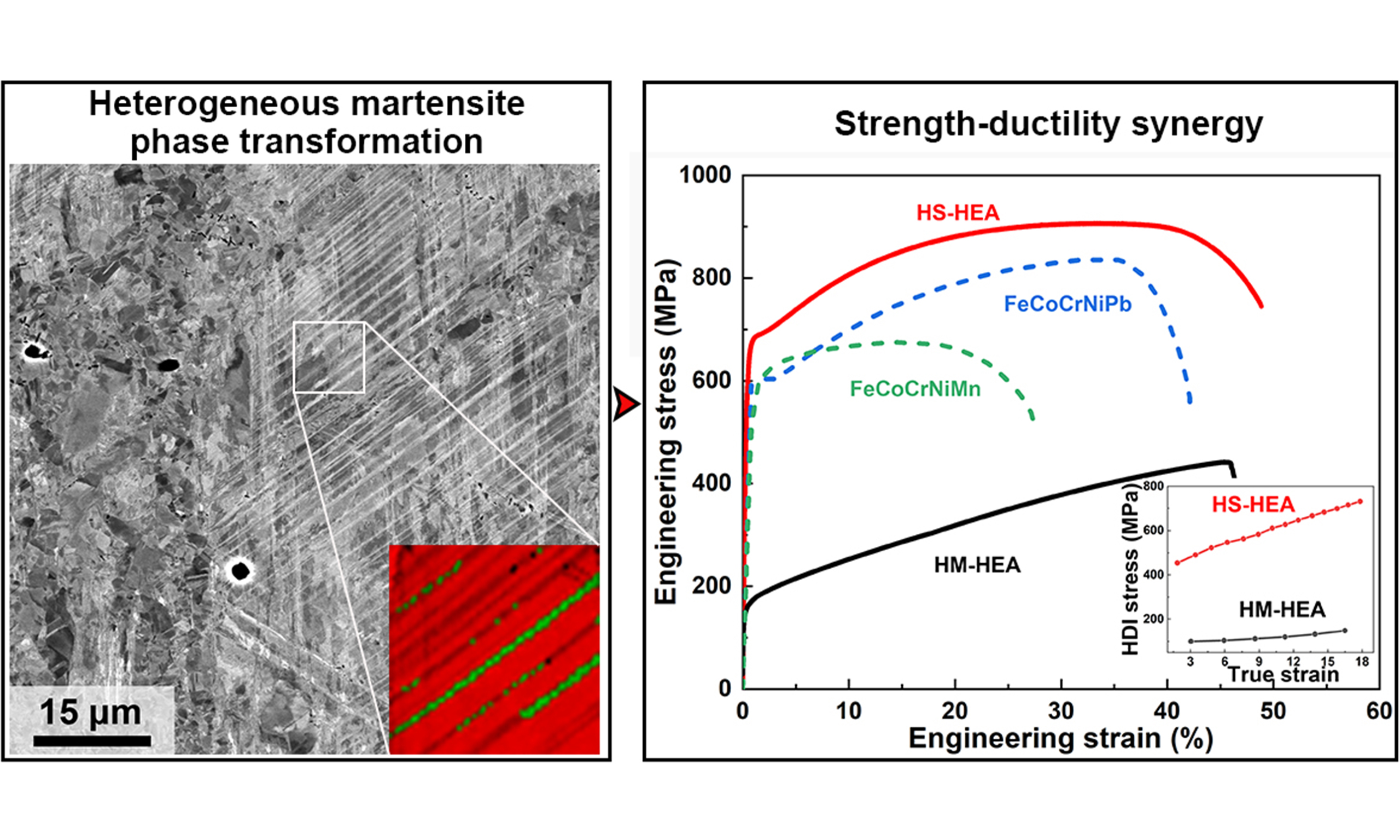
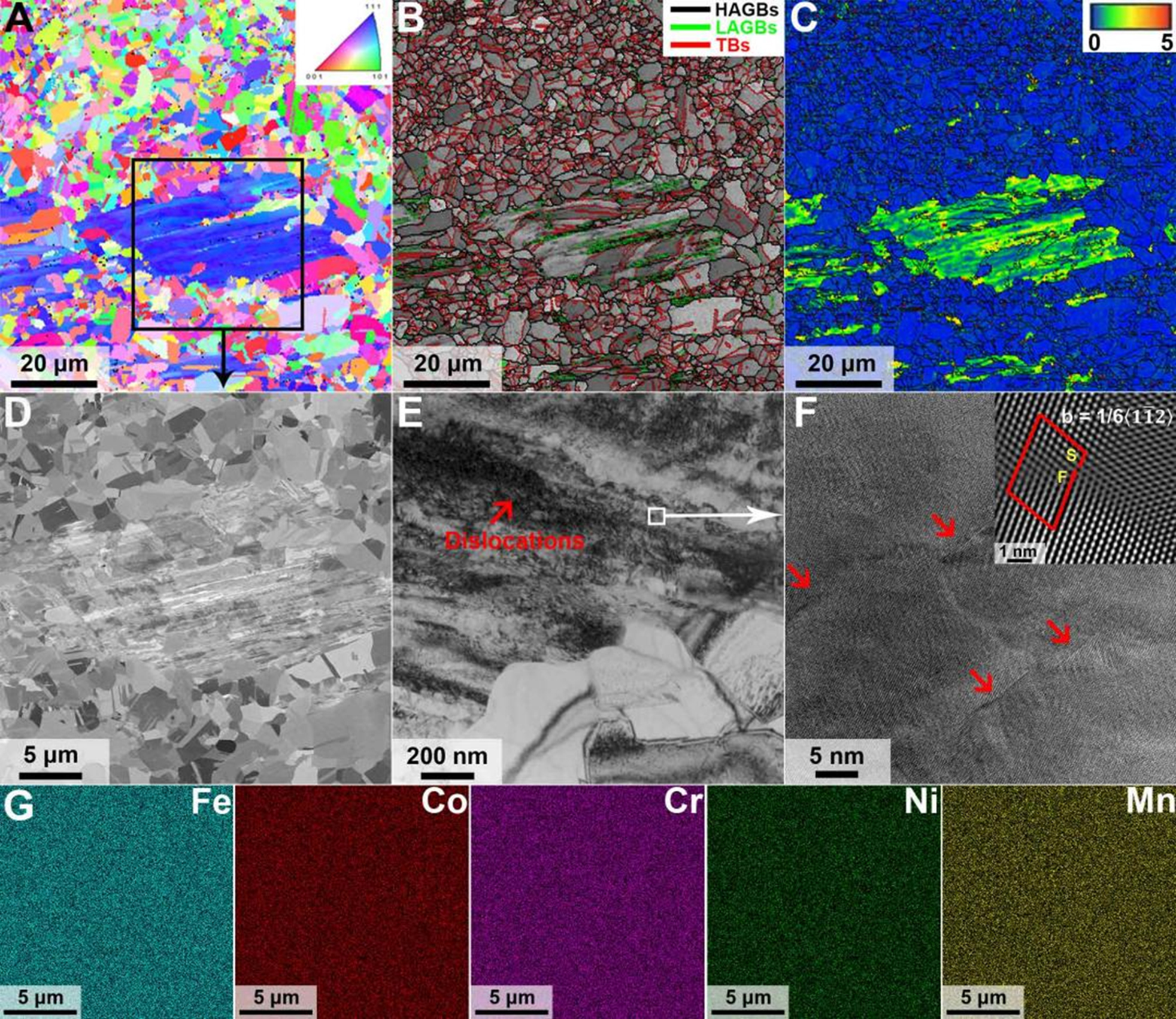
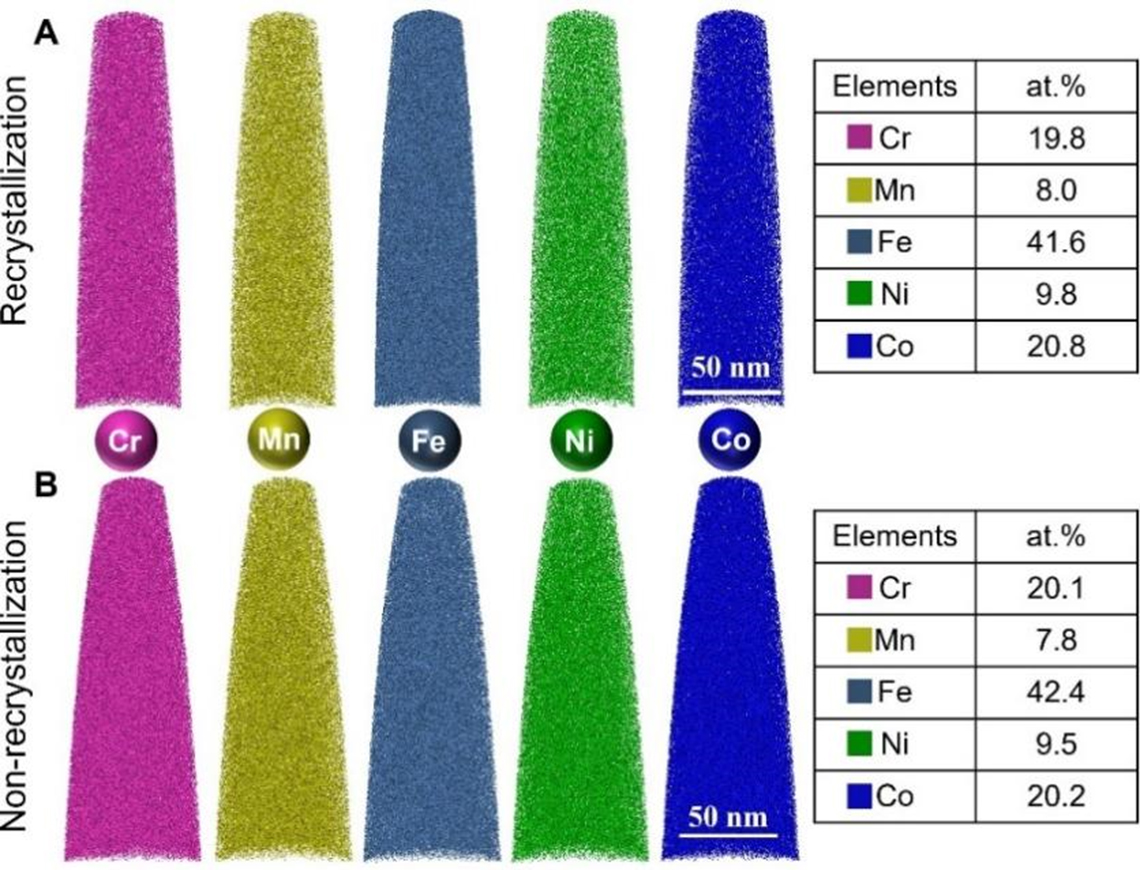

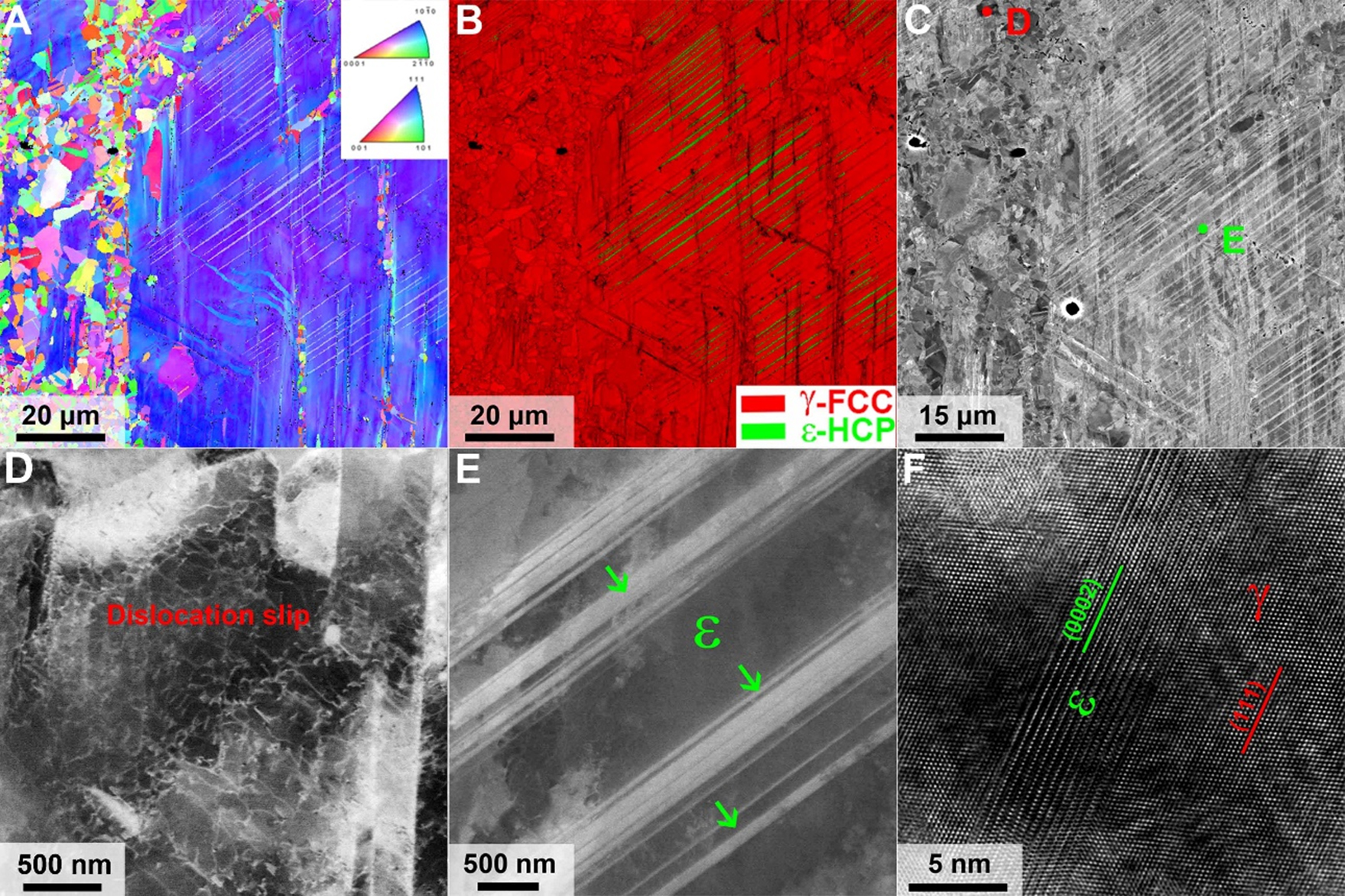
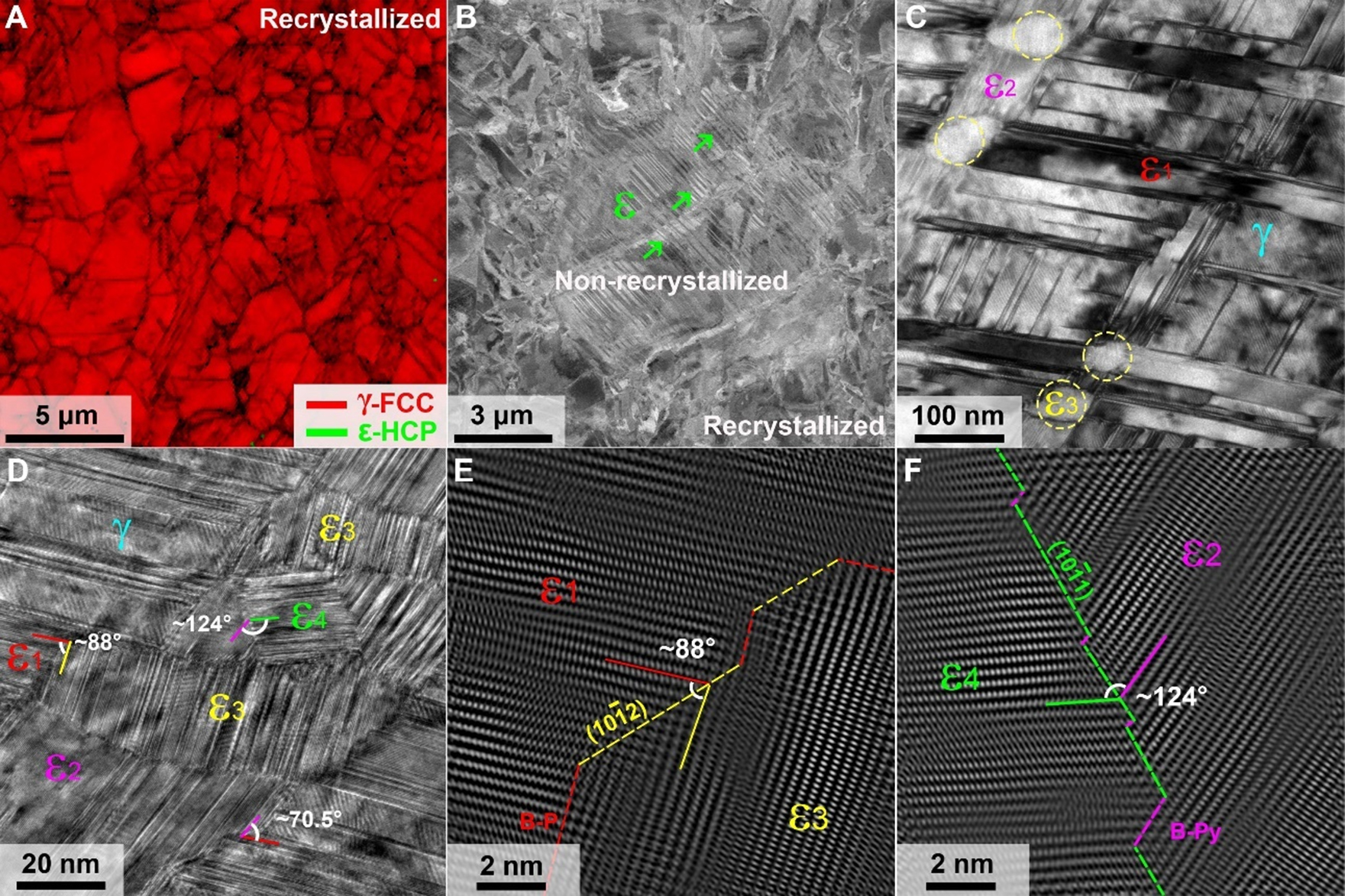
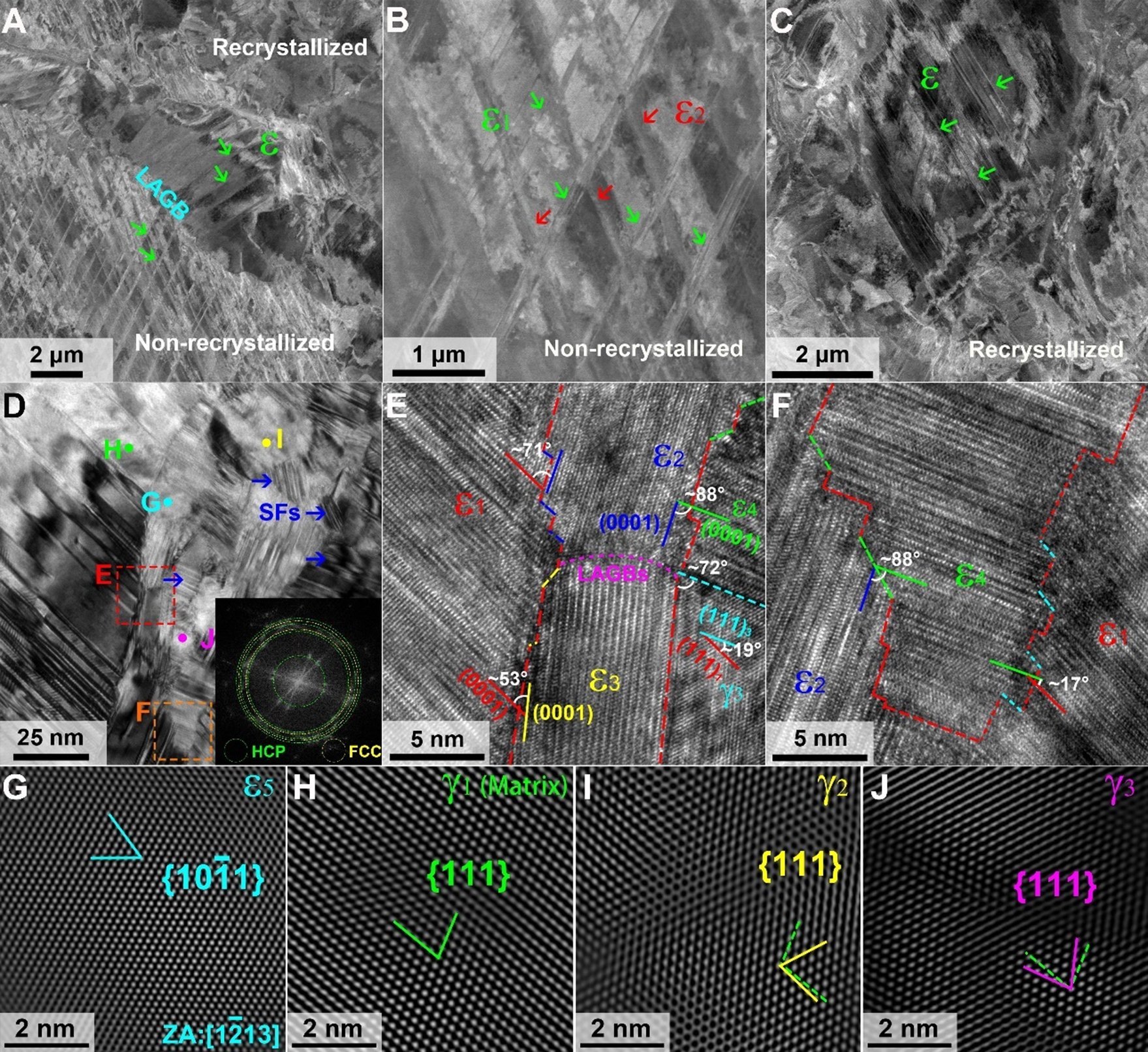
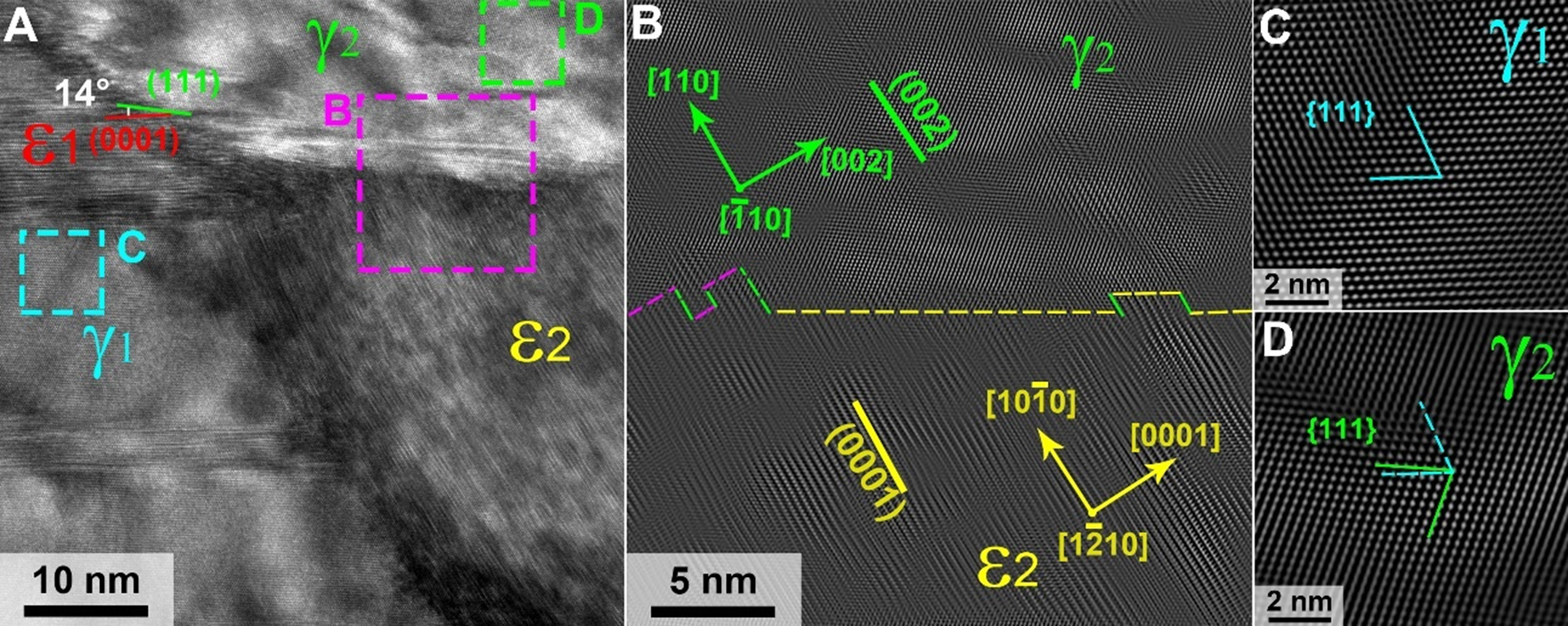
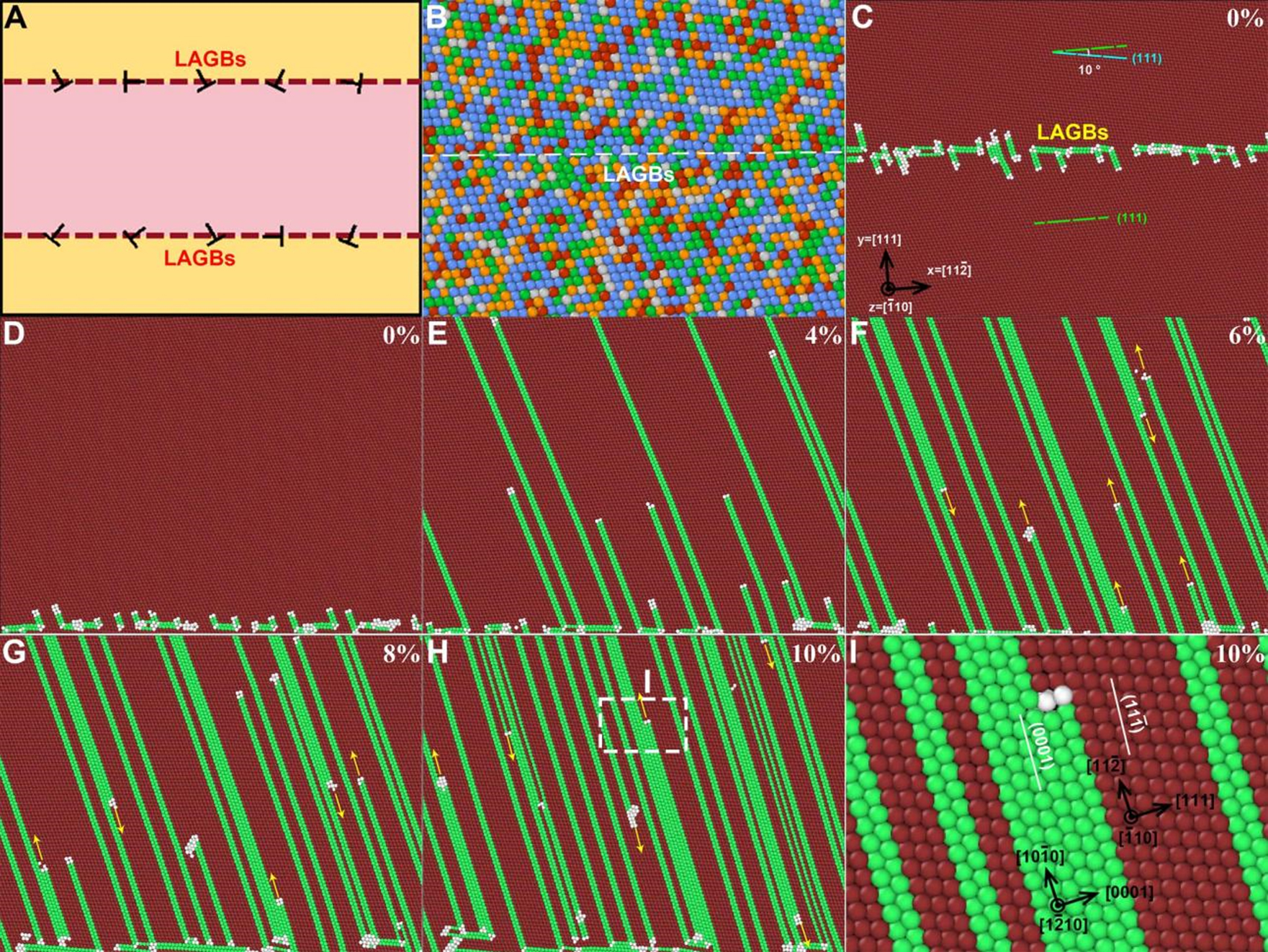
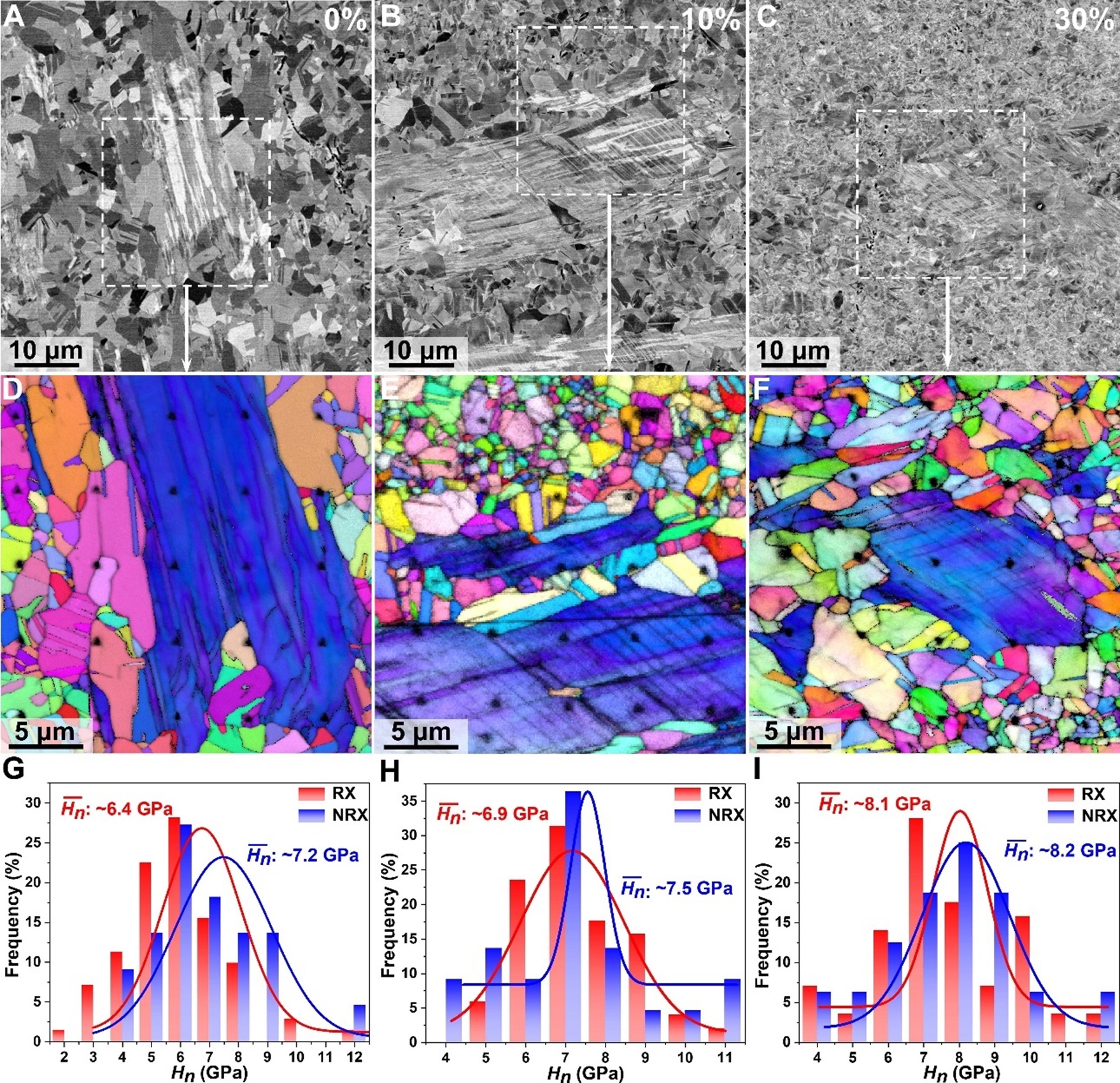












Comments
Comments must be written in English. Spam, offensive content, impersonation, and private information will not be permitted. If any comment is reported and identified as inappropriate content by OAE staff, the comment will be removed without notice. If you have any queries or need any help, please contact us at [email protected].